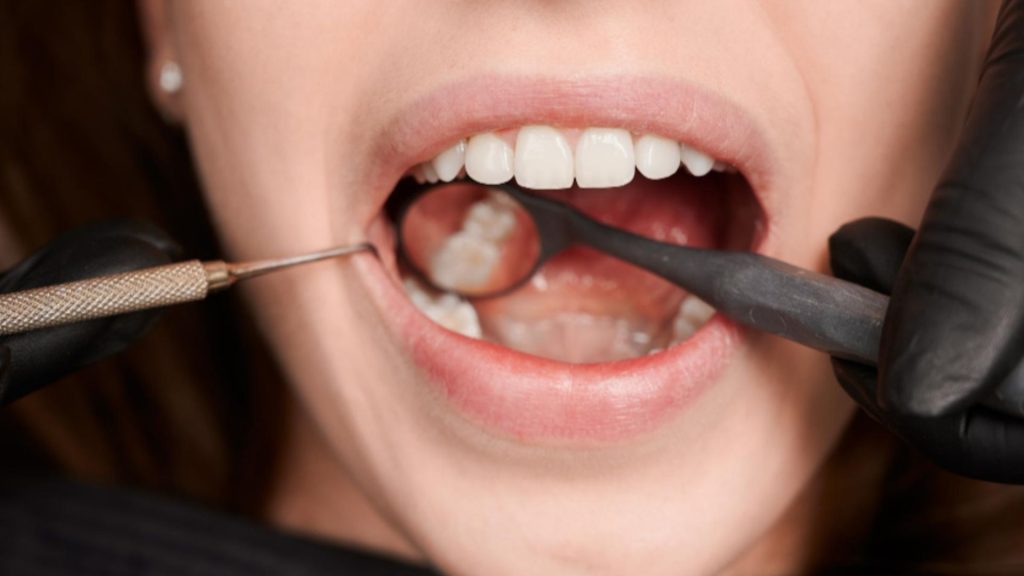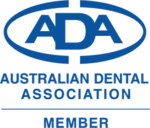Teeth reshaping, also called enameloplasty, is a delicate but effective cosmetic dental treatment. By gently reshaping the tooth surface and removing a small amount of enamel, teeth reshaping helps create a more even smile and a more beautiful and balanced row of teeth. With teeth straightening, a beautiful smile is no longer just a faraway dream. Join us to learn more about this technique and how it may alter your life.
Teeth Reshaping – What Is It?

Teeth reshaping, also called enameloplasty or dental contouring, is a way to change the shape of teeth by removing a small amount of enamel. This method is often used to fix small problems, like crooked teeth, small cracks, or tooth tips that meet. In particular, changing teeth usually doesn’t require sedation or tattooing that is painful or invasive. Usually, the process is quick and easy. However, this approach cannot fix broader issues like crooked, projecting teeth or enamel erosion. Most of the time, adjusting teeth doesn’t affect the structure or nerves of the teeth and only takes one treatment session. However, your dentist may recommend other treatments, such as grinding, braces, or dentures, if the issues with your teeth are more severe.
Benefits of Teeth Reshaping

Teeth Reshaping (or enameloplasty) improves attractiveness and confidence, making it a popular cosmetic dental technique. Here are a few major advantages of having your teeth reshaped:
- Improves tooth symmetry and alignment: Teeth trimming can help fix the shape of teeth so that they are more even and look better together. Teeth that aren’t straight or that touch each other can be smoothed or cut to make the smile look more balanced and natural.
- Fixing tiny fissures and chipped teeth: Reshaping teeth helps fix tiny fractures and breaks. To restore a smooth tooth surface, chipped or rough teeth may be repaired.
- Improve smile aesthetics: Teeth reshaping enhances smiles. Smoothing and refining tooth form may brighten, harmonize, and enhance a smile. This may boost social and professional confidence.
- Minimizing impact on tooth structure: Teeth reshaping hardly affects tooth enamel or nerves. The treatment doesn’t need anesthetic, isn’t intrusive, and doesn’t hurt.
- Fast and efficient process: Reshaping teeth takes little time. Most instances only need one treatment session, and benefits are seen immediately.
Thus, keep in mind that the benefits of teeth straightening can vary from person to person based on how their teeth look and what they want. So, ask a dentist about particular advantages and if tooth contouring is good for you.
How Do Teeth Reshaping Differ From Competing Procedures?
Teeth reshaping, also called enameloplasty or dental sculpting, has benefits that aren’t found in other treatments and are different in several ways. Here are a few of the main differences:
- Minimally Invasive: Teeth fitting is a cautious and slightly invasive treatment. It removes little pieces of enamel to enhance tooth aesthetics. Teeth reshaping is less painful and retains the natural structure of the teeth than other procedures.
- Quick and Efficient: Teeth reshaping is usually fast. The dentist may generally finish reshaping in one appointment, depending on the extent. This makes it advantageous for those seeking rapid benefits without lengthy therapy.
- Versatile Application: Teeth reshaping is a good way to fix small facial issues like uneven or chipped teeth, rough edges, or changing the shape and length of the teeth. It improves teeth symmetry and smile beauty. However, serious misalignment or tooth damage may necessitate orthodontics or dental repairs.
- Non-Removal of Tooth Structure: Teeth reshaping does not need extra materials like dental veneers or crowns. Instead, it reshapes and contours tooth enamel. since of this, the alternative is less expensive since neither laboratory manufacturing nor prosthetic materials are required.
- Natural Appearance: Teeth reshaping enhances natural beauty and function. Dentists may enhance a smile’s appearance by gently altering enamel. A natural, balanced grin results.
In summary, to get the best dental treatment for your circumstances, see a certified dentist. Teeth contouring has several benefits, although orthodontics, dental veneers, and dental bonding may be superior. A dental professional’s thorough assessment can help you choose the best therapy.
The Teeth Reshaping Process in Bassendean, Perth
In Bassendean, Perth, the process of reshaping teeth takes a number of careful steps to fix the shape and smooth the surface of the teeth. The dentist takes great care to ensure that the work is done properly at every stage, from the first examination to the final polish:
Step 1: Initial Consultation
First, the process starts with a first meeting with a professional dentist. During this meeting, you can talk about your worries, the results you want, and what you expect from the treatment to reshape your teeth.
Step 2: Evaluation and Treatment
Next, the dentist will look at your teeth carefully and figure out how they are doing. They will look at things like the shape, spacing, chips, or rough edges of your teeth to figure out the best way to treat you. Then, they might also use X-rays or computer imaging to see your teeth more clearly.
Step 3: Digital Imaging or Mock-ups
In some cases, the dentist may use computer images or make models to show what the teeth reshaping treatment might look like after it is done. This lets you see how your smile is going to change and give feedback before the real treatment starts.
Step 4: Teeth Reshaping Procedure
Once the treatment plan is set, the process of changing the teeth can begin. Here’s what you need to do:
- Preparation: The dentist isolates the tooth for adjustment. They may employ rubber or other materials to protect neighboring teeth and gums during therapy.
- Shaping and Adjusting: The dentist removes little portions of tooth enamel using drills or grinding discs. This treatment smooths teeth, repairs minor fractures, and corrects tooth form and length.
- Dental Polishing: After shaping the teeth, the dentist polishes them for a natural look. Polishing reduces enamel removal-induced roughness.
Step 5: Post-Treatment Care
The dentist may provide post-treatment advice after tooth contouring. This may involve brushing, flossing, and avoiding behaviors or foods that might harm the treated teeth.
Step 6: Follow-Up Appointments
The dentist may arrange follow-up sessions to examine the tooth-reshaping outcomes. During these meetings, any necessary changes or improvements can also be made.
In short, it’s important to remember that changing your teeth is usually a cautious and slightly painful process. However, the dentist’s approach and each patient’s demands may affect the processes and approaches.
Conclusion

As a confident, bright smile becomes a fundamental part of daily living, more individuals are seeking cosmetic dentistry options to enhance their oral attractiveness. Spring Orchid Dental Clinic in Bassendean, Perth, is convinced that our teeth contouring treatment is right for you. We recognize that each patient is unique at Spring Orchid Dental Clinic. We listen to your objectives and love personal advice. Our individualized treatment plan uses skilled expertise and cutting-edge technology to provide you with the greatest results.
FAQs
Can You Reshape Big Teeth?
Yes, many dental treatments may alter huge teeth. The technique depends on the patient’s oral state and intended objective. Here are some popular ways to realign big teeth:
- Teeth Reshaping (Enameloplasty): This technique reshapes the teeth by carefully removing enamel. Dentists may balance and proportion teeth by gently reshaping their edges and surfaces. For somewhat bigger teeth, teeth contouring may work.
- Dental Bonding: It uses tooth-colored composite resin to create the tooth. To increase tooth look and size, the resin is molded and polished. Bonding may fix slight size differences and reshape massive teeth.
- Dental Veneers: Veneers are thin, custom-made shells attached to the front of teeth. They change tooth size, shape, color, and appearance. For those with big teeth, veneers may provide a more balanced smile.
So, for the best treatment, visit a dentist or orthodontist. They will assess your dental health, discuss your objectives, and suggest the best ways to remodel and improve your teeth.
What Are The Risks Of Tooth Reshaping?
Enameloplasty, commonly known as dental contouring, is a safe surgery. Like any dental or medical operation, there are risks and concerns. However, here are some potential risks of changing teeth:
- Sensitivity.
- Enamel Damage.
- Irreversible Changes.
- Limited Effectiveness.
- Unwanted Changes.
So, talk to a dentist about tooth reshaping’s dangers and advantages. They will analyze your teeth, consider your objectives, and propose the best treatment alternatives to fulfill your goals while minimizing risks.
Are Teeth Reshaping Safe?
Yes, teeth reshaping is usually thought to be a safe dental treatment when done by a trained and experienced dentist. It gently removes enamel to enhance the tooth’s look. To decide whether tooth contouring is correct for you, see a certified dentist. They’ll evaluate your oral health, discuss your objectives, and provide individualized advice on the procedure’s safety and compatibility.





